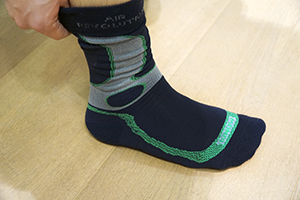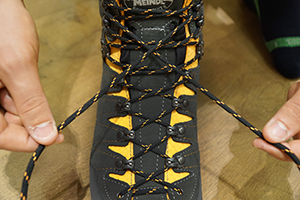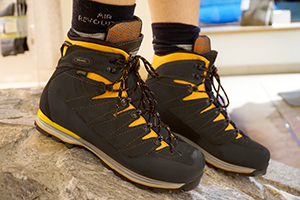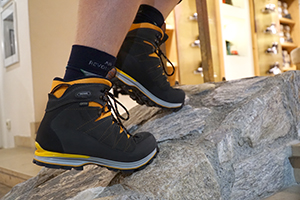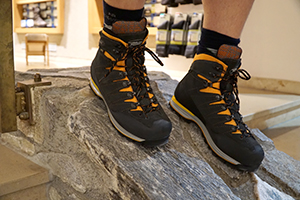Every child knows that a shoe has to fit.
Especially on walking trips and in the mountains, a shoe that fits perfectly makes a significant contribution to the fun of the trips – or it can also spoil it completely. Here are some tips on the correct way to try on boots and how to break them in.
The first step towards new boots takes you to the specialist retailer or specialist department. Only here is the necessary expertise available to provide good advice. They can also provide a large selection of different styles in all sizes. Ideally, go in the afternoon, because your feet increase in size over the course of the day. They swell slightly – as on a walking trip. In addition, you should also be clear about what you are going to use the boots for (Type of use). Once you know what you’re looking for, you can start. Lukas Meindl, who is responsible for product development at Meindl and is also very active outdoors, offers advice on what you should consider:

